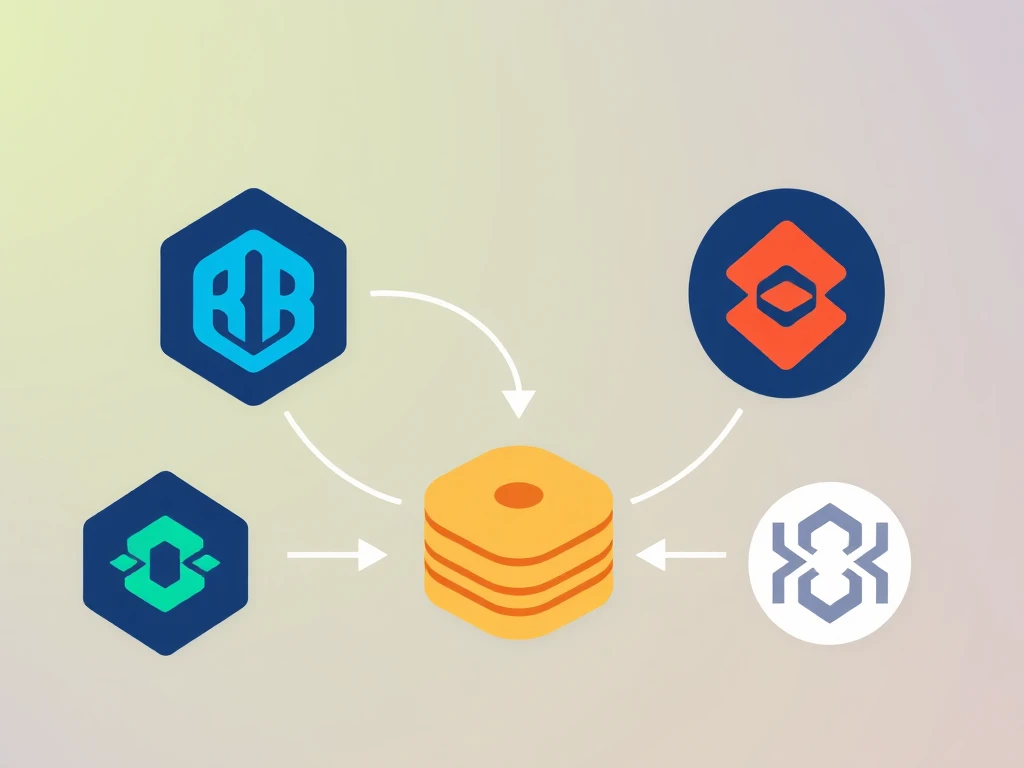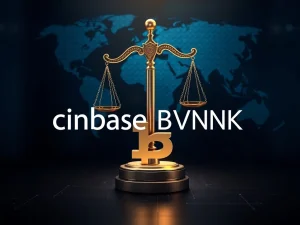Revolutionary: PancakeSwap Cross-Chain Swaps Launch to Enhance DeFi User Experience

Navigating the world of decentralized finance (DeFi) can sometimes feel like hopping between islands with complicated transfers. Moving assets from one blockchain network to another traditionally involves complex and often risky steps. But what if you could perform cross-chain swaps with just one click? This is the exciting reality PancakeSwap is now bringing to users, significantly improving the DeFi user experience.
Simplifying Swaps with PancakeSwap Cross-Chain
PancakeSwap, a leading decentralized exchange (DEX), has rolled out a major upgrade: one-click PancakeSwap cross-chain swaps. This integration is designed to make interacting with assets across different networks as straightforward as a simple swap on a single chain. Supported networks currently include BNB Chain, Arbitrum, and Base, with more expected in the future.
The goal is clear: remove the friction associated with moving tokens between siloed blockchain ecosystems. Instead of using external bridges or multiple transactions, users can now initiate a swap directly within the PancakeSwap interface, specifying the asset and destination chain they want.
How Across Protocol Integration Makes it Possible
This seamless functionality is powered by an integration with Across Protocol integration. Across uses an innovative approach known as intent-based transfers. Unlike traditional bridges that lock assets in a contract on the source chain and mint new ones on the destination chain, intent-based systems work differently.
Here’s a simple breakdown:
- The user states their ‘intent’ – e.g., swap USDC on Base for WETH on Arbitrum.
- A decentralized network of ‘relayers’ or ‘solvers’ competes to fulfill this intent.
- A relayer with WETH on Arbitrum sends it to the user.
- The relayer is later repaid the equivalent value in USDC on Base, often facilitated by Across Protocol’s infrastructure.
This method avoids the need for users to interact directly with complex bridge contracts, simplifying the process significantly.
Understanding Intent-Based Cross-Chain Swaps
The concept of intent-based cross-chain swaps is gaining traction because it shifts the complexity away from the user and towards a network of specialized participants. PancakeSwap’s Head Chef, Chef Kids, highlighted this benefit, noting that swaps are settled quickly through a decentralized network of relayers, offering a faster experience.
Hart Lambur, co-founder of Across, echoed this sentiment, suggesting that intent-based infrastructure is key to onboarding both retail and institutional users into DeFi. He emphasized the security, auditability, and clean execution it provides, reducing the operational burden typically associated with cross-chain activities.
Addressing Blockchain Bridge Security Concerns
One of the most critical reasons for moving towards solutions like intent-based swaps is the inherent risk associated with traditional blockchain bridges. Bridges have historically been major targets for exploits due to the large amounts of locked assets they control. The notorious Ronin Bridge hack in 2022, which resulted in over $600 million in losses, serves as a stark reminder of these vulnerabilities.
Chef Kids pointed out that intent-based bridges generally offer better blockchain bridge security because they do not require locking user assets in a contract for extended periods. This design significantly reduces the attack surface compared to traditional bridge models. By settling swaps in near real-time through relayers, the risk exposure for user funds is minimized.
This focus on security and simplicity is not unique to PancakeSwap and Across. Other initiatives, such as the proposed ERC-7683 standard supported by Vitalik Buterin, also aim to streamline cross-chain transactions and improve the underlying infrastructure for safer, more efficient transfers.
What Does This Mean for DeFi’s Future?
The launch of one-click cross-chain swaps on PancakeSwap represents a significant step forward for the entire DeFi ecosystem. By tackling a major pain point – the complexity and risk of cross-chain asset movement – PancakeSwap is making DeFi more accessible and safer for everyone.
This simplified approach is crucial for broader adoption, particularly for users new to DeFi and potentially for institutions looking to engage with decentralized protocols without the operational overhead and security concerns previously associated with cross-chain interactions. As more protocols integrate similar intent-based solutions, we can look forward to a more interconnected, user-friendly, and secure multi-chain future.







